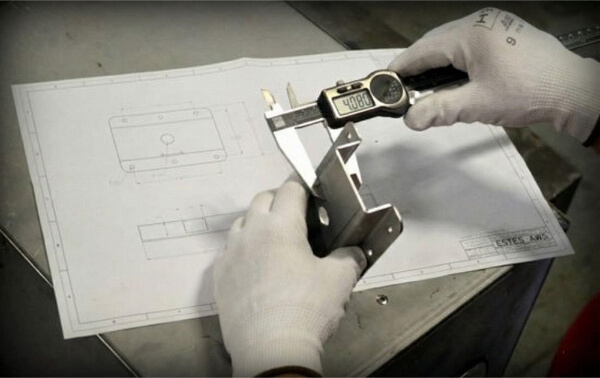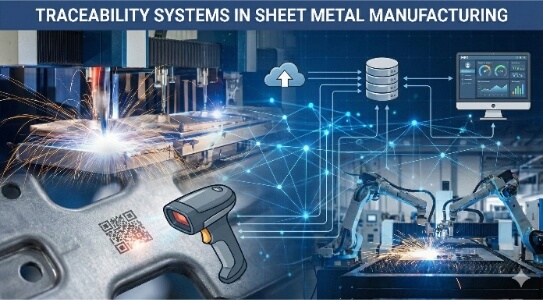複雑な金属部品の製造には、品質、コスト、時間の面で常に課題がつきまといます。アルミダイカストは、高精度の部品を大規模に生産する信頼性の高い効率的なプロセスを提供することで、これらの問題を解決します。この実証済みの方法は、一貫した結果を求めるエンジニアや製造業者に卓越した価値を提供します。
アルミダイカスト鋳造が貴社の製造業務をどのように変えることができるか、検討する準備はできましたか?このガイドでは、基本原理から高度な応用まで、あらゆることを取り上げており、次のプロジェクトで十分な情報に基づいた決定を下すのに役立ちます。
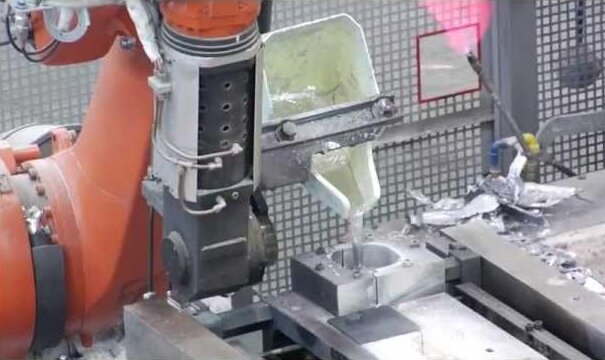
アルミダイカストとは?
アルミダイカストは、精密で滑らかな金属部品を製造する製造プロセスです。溶けたアルミニウムを高圧で金型に注入し、金属が金型の形状になるようにします。
このプロセスは、優れた耐食性と高い導電性を持つ部品を作ることで知られています。また、アルミダイカストは強度対重量比が高く、軽量でありながら耐久性のある部品に最適です。迅速な生産が可能で、特に大量生産では費用対効果に優れています。
アルミダイカストの工程
ダイカストの工程は、原材料のアルミニウムを完成部品に変える正確な一連のステップに従います。それぞれの工程を説明しよう:
ステップ1:金型の準備
この工程は、部品の金型を形成する2つの部分からなる金型を準備することから始まる。この金型は通常、溶融アルミニウムの圧力と温度に耐える高強度鋼で作られています。
ステップ2:アルミニウムの溶解と注入
金型の準備ができたら、アルミニウムを炉で溶かす。その後、溶けたアルミニウムを高圧で金型に注入します。
ステップ3:冷却と固化
射出後、溶けたアルミニウムは金型内で冷えて固まります。冷却時間は部品の厚さによって異なりますが、金型の冷却システムにより通常すぐに冷却されます。
ステップ4:キャストの排出
部品が固化したら、金型の半分が分離され、部品が排出される。この作業は、新しく形成された部品に損傷を与えないよう慎重に行われる。
ステップ5:キャスティング後の作業(デバリング, 表面処理)
射出後、部品にはさらに仕上げ工程が必要になる場合があります。これには、部品のエッジの周りに形成された余分な材料(フラッシュと呼ばれる)の除去が含まれます。
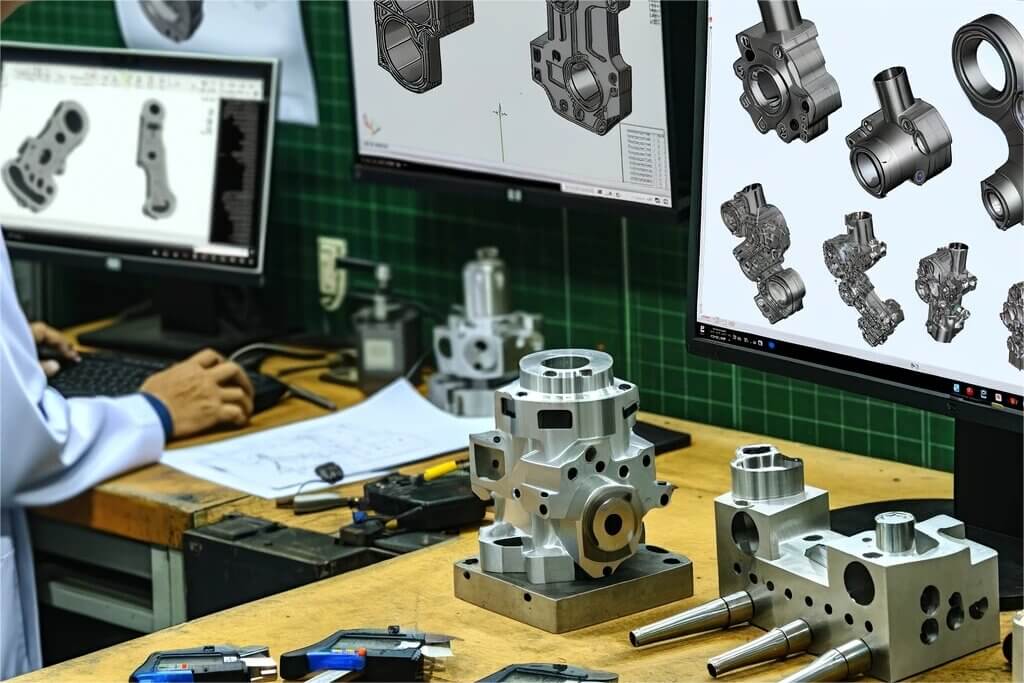
アルミダイカストの種類
アルミダイカストにはいくつかのバリエーションがあり、それぞれが特定の製造ニーズに合わせて調整されています。これらの方法は、溶融アルミニウムを金型に導入する方法と、凝固する条件が異なります。
高圧ダイカスト
HPDCでは、通常10,000~25,400psiの極圧下で、溶融アルミニウムを鋼鉄製の金型に注入します。この方法は、厳しい公差と滑らかな表面仕上げを持つ複雑な形状を製造するのに理想的です。
低圧ダイカスト
LPDCでは、制御された低圧を使用して金型キャビティに溶融アルミニウムを充填するため、一貫した正確な充填が保証されます。この方法は気孔率を最小限に抑え、特にホイールや構造部品のような左右対称の部品を作るのに適しています。
真空ダイカスト
真空ダイカストは、金型キャビティを真空にし、溶融アルミニウムを金型内に引き込みます。このプロセスにより、空気の巻き込みや気孔が減少し、より高密度で高品質な鋳物が得られます。
スクイズダイカスト
スクイズダイカストは、凝固時に高い圧力を加えることにより、鍛造と鋳造の要素を組み合わせたものです。この方法によって気孔がなくなり、機械的特性が向上し、非常に優れた強度と耐久性を持つ部品が製造されます。
アルミダイカストの利点
アルミダイカストにはいくつかの利点があり、製造業者にとって人気のある選択肢となっています。以下はその主な利点です:
軽量で丈夫な製品
アルミダイカストは、軽量かつ強靭な部品を作ります。アルミニウム本来の特性により、自動車や航空宇宙産業など、軽量化が性能向上に不可欠な産業での用途に最適です。
費用対効果
アルミダイカストは、大規模生産のための費用対効果の高い選択肢です。金型費用は当初は高くつくかもしれませんが、効率的なプロセスにより、迅速な大量生産が可能になり、単価が下がります。
優れた寸法精度
高圧射出プロセスは、優れた精度を保証します。アルミダイカストは、厳しい公差と一貫した寸法の部品を生産し、追加の機械加工の必要性を低減します。
放熱性の向上
アルミニウムは熱伝導性に優れ、熱に敏感な用途に最適です。ダイカスト部品は、エレクトロニクスや自動車などの産業にとって不可欠な熱を効果的に放散します。
複雑な形状と複雑なデザイン
アルミダイカストは、複雑な形状や複雑な特徴を持つ部品を製造することができます。このプロセスでは、他の製造方法では困難な詳細設計、薄肉、複雑な形状が可能です。
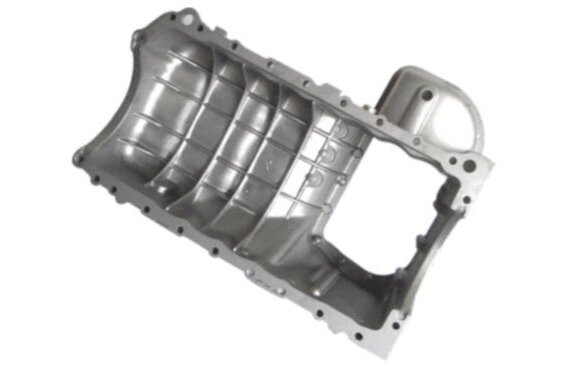
アルミダイカストの課題
アルミダイカストには多くの利点がある一方で、製造業者が高品質の生産を確保するために克服しなければならない課題もいくつかあります。以下は、このプロセスで遭遇する最も一般的な問題の一部です:
気孔率の問題
鋳造中に、空気や水素などのガスが溶融アルミニウム中に閉じ込められると、空隙が生じます。その結果、内部空洞や表面欠陥が生じ、機械的強度、気密性、品質を低下させます。
解決策としては、金型設計の最適化、ベントシステムの改善、ガス巻き込みを減らすための合金の改良などがある。
表面欠陥と介在物
ブリスター、介在物、粗い仕上げなどの表面欠陥は、溶融アルミニウム中の不純物や金型のメンテナンス不良から発生することがよくあります。これらの欠陥は鋳物を弱くし、美観に影響を与えます。
これを防ぐには、金型を徹底的に洗浄し、合金を適切に処理し、金型の温度を一定に保つことが不可欠だ。
ホットクラッキング
熱間割れ(または熱間引裂き)は、鋳物がまだ半凝固状態である凝固の最終段階で発生する。不均一な熱収縮や、鋳物の弱い箇所への応力集中が原因で起こります。
熱間割れを防ぐには、メーカーは肉厚を均一にし、鋭角の設計を避け、凝固時の冷却速度をコントロールする必要がある。
アルミニウムに最適な鋳物とは?
ダイカストに最適なアルミニウム合金は、特定の用途によって異なります。しかし、A380は鋳造性、耐久性、費用対効果のバランスが優れているため、最も一般的に使用されている合金です。流動性、熱伝導性、耐熱亀裂性に優れているため、複雑な設計や薄肉用途に最適です。
その他の注目すべき合金は以下の通り:
- A360:優れた耐食性と気密性で知られ、高温や過酷な環境に適しています。
- A383 (ADC12):低温での充填性が良く、複雑な形状や細かいデザインに最適。
- A356:溶接性と耐久性のため、航空宇宙および産業用途に人気がある。
アルミダイカストの一般的な用途
アルミダイカストは、軽量で耐久性があり、複雑な部品を高精度で製造できるため、さまざまな産業で広く使用されています。以下は、その最も一般的な用途の一部です:
自動車産業:
- エンジンブロック
- トランスミッションハウジング
- ホイール
- 構造部品
航空宇宙と航空:
- エンジン部品
- 翼構造
- 着陸装置
家電:
- スマートフォンケース
- ノートパソコン用シャーシ
- ヒートシンク
- カメラハウジング
産業機器:
- ハウジング
- 括弧
- ギア
医療機器:
- MRIスキャナー部品
- 超音波装置ケーシング
- 手術器具
- 携帯用酸素ポンプ部品
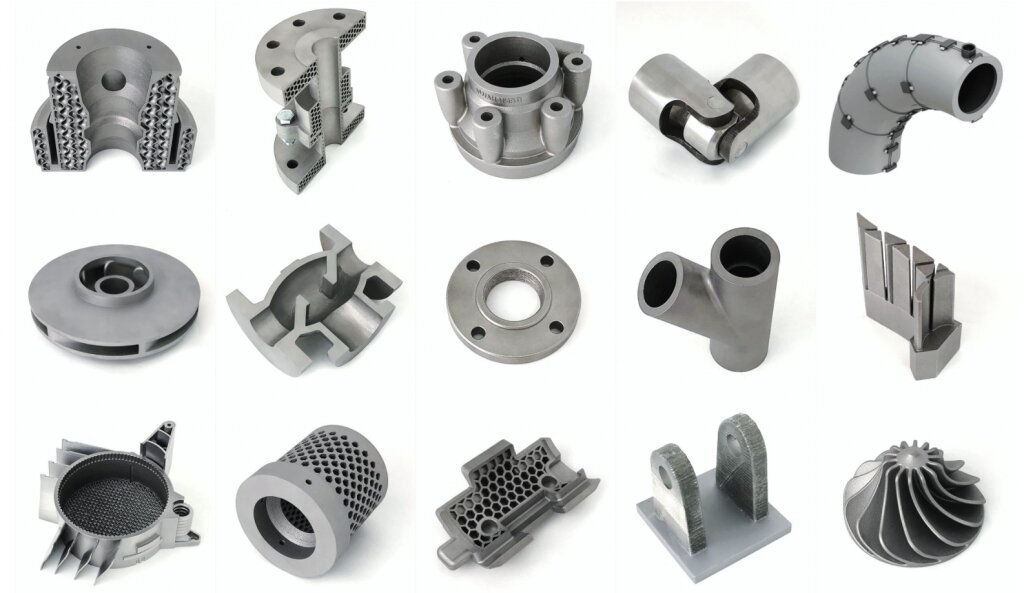
ダイカストに代わる方法 - 砂型鋳造とインベストメント鋳造
ダイカストが最適でない場合、砂型鋳造とインベストメント鋳造が実行可能な代替案として浮上します。それぞれの方法には独自の利点があり、特定の用途に適しています。
砂型鋳造
砂型鋳造では、砂から鋳型を作り、溶融金属を流し込む。このプロセスは汎用性が高く、低~中程度の生産量であれば費用対効果も高い。
砂型鋳造の利点:
- 低い金型費用:金型が安価なため、試作品や少量生産に最適。
- 素材の多様性:ほぼすべての鉄または非鉄合金に対応。
- サイズの柔軟性:数オンスから200トン以上の部品を生産可能。
インベストメント鋳造
インベストメント鋳造では、セラミックでコーティングされたワックス・パターンを使って鋳型を作ります。ワックスを溶かし、溶けた金属をセラミックのシェルに流し込むことで、高精度の部品を作ることができる。
インベストメント鋳造の利点:
- 厳しい公差:優れた寸法精度と最小限の機械加工で部品を生産。
- 複雑な形状:製図アングルなしで複雑なデザインが可能。
- 優れた表面仕上げ:砂型鋳造やダイカスト鋳造よりも滑らかな仕上げが可能。
結論
アルミダイカストは、多様な産業で高品質な部品を製造するための、多用途で費用対効果の高いソリューションを提供します。その利点には、軽量強度、優れた寸法精度、複雑な形状の製造能力などがあります。
自動車部品、航空宇宙部品、民生用電子機器の筐体など、アルミニウムダイカストは要求の厳しい用途に必要な性能と精度を提供します。
アルミダイカストがお客様の次のプロジェクトにどのようなメリットをもたらすか、検討する準備はできていますか? お問い合わせ 無料相談とお見積もりはこちらから。

ケビン・リー
レーザー切断、曲げ加工、溶接、表面処理技術を専門とし、板金加工において10年以上の実務経験があります。シェンゲンのテクニカルディレクターとして、複雑な製造上の課題を解決し、各プロジェクトにおける革新と品質の向上に尽力しています。

